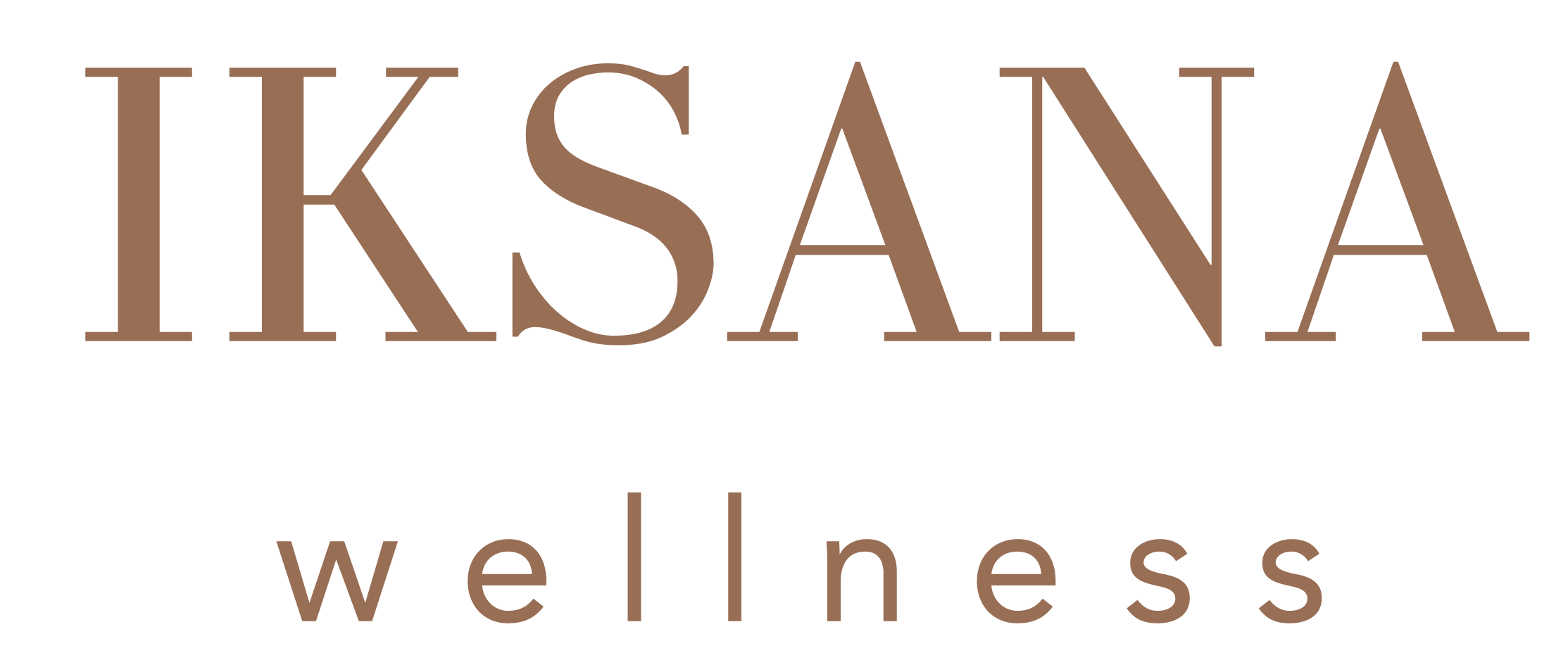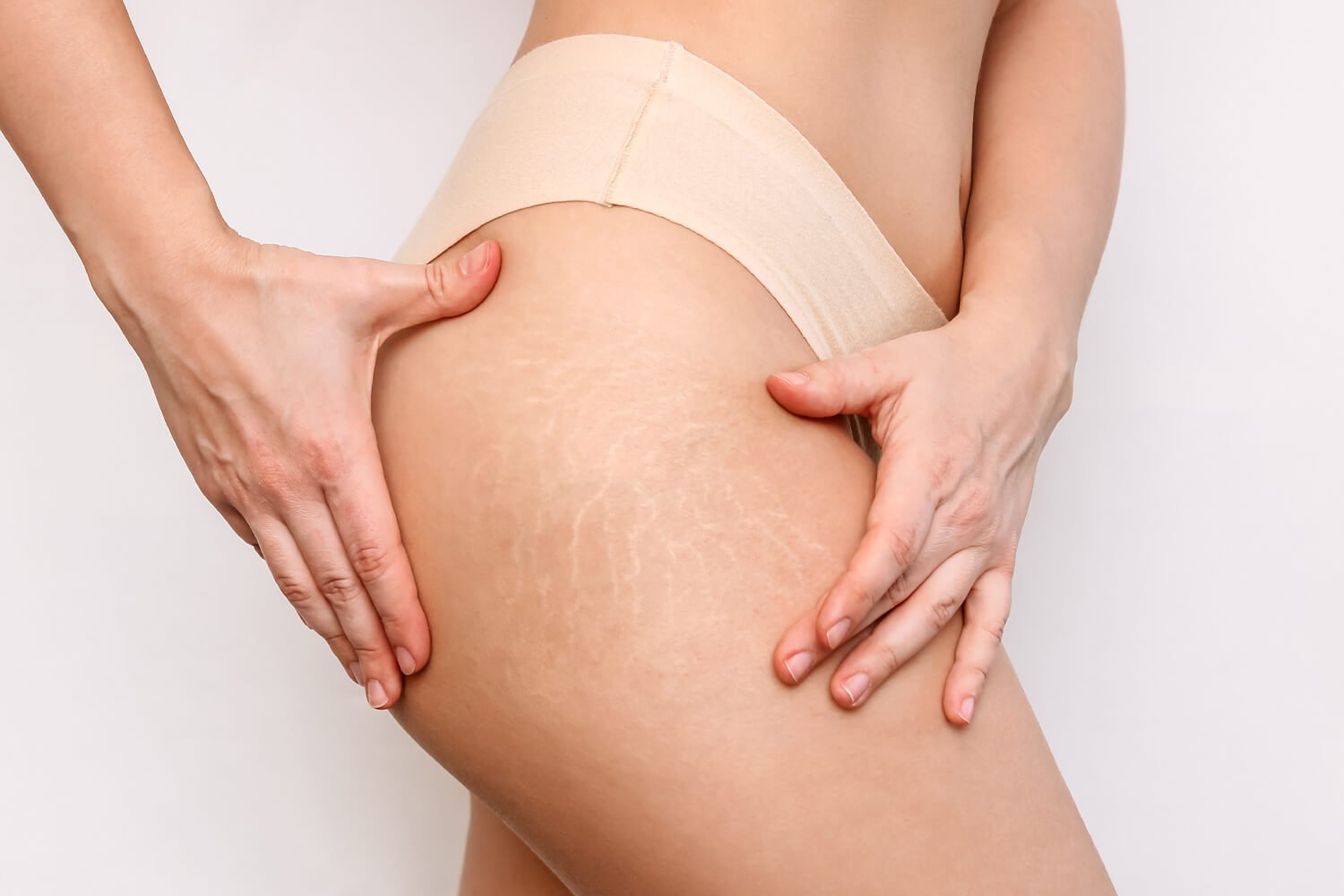What are stretch marks?
Stretch marks, also known as striae, are long, narrow streaks, stripes or lines that appear on the skin as a result of rapid stretching or expansion of the skin.
They are a form of scarring that occurs when the skin is stretched beyond its natural capacity and the underlying collagen and elastin fibers are damaged.
Stretch marks can occur on various parts of the body, including the abdomen, thighs, hips, buttocks, breasts, upper arms, and lower back. They are more common in women than men and can develop during pregnancy, puberty, weight gain, or rapid muscle growth.
Initially, stretch marks may appear as raised or reddish-purple lines, but over time they often fade to a lighter color and become less noticeable. While stretch marks are not harmful, they can be a cosmetic concern for some people.
What can you do about stretch marks?
There are several derma-based treatments available for stretch marks, including:
- Microneedling: Microneedling involves using a device with tiny needles to create micro-injuries in the skin. This process stimulates collagen production and can improve the appearance of stretch marks over time.
- Platelet-rich plasma (PRP) therapy: PRP therapy involves using the patient’s own blood plasma, which is rich in growth factors, to promote healing and collagen production in the skin. This can help improve the appearance of stretch marks and promote skin health.
- Fractional CO2 laser therapy: Fractional CO2 laser therapy involves using a laser to create microscopic columns of heat in the skin. This process promotes collagen production and skin tightening, which can help reduce the appearance of stretch marks.
It’s important to note that not all of these treatments may be suitable for everyone, and some may require multiple sessions to achieve desired results. Consult with a dermatologist to determine the best course of treatment for your specific needs.
While stretch marks cannot always be prevented, there are several steps you can take to minimize your risk of developing them:
- Maintain a healthy weight: Rapid weight gain or loss can cause stretch marks Stay hydrated: Drinking plenty of water can help keep your skin hydrated and elastic, which can reduce the risk of stretch marks.
- Eat a healthy diet: Eating a diet rich in vitamins and minerals, particularly vitamins A and C, can help
- Exercise regularly: Stay healthy and energized. Exercise regularly for a stronger body and a happier mind.
- Moisturize your skin: Keeping your skin moisturized can help prevent stretch marks from forming.
- Avoid smoking: Smoking can damage collagen and elastin fibers in the skin, which can contribute to the formation of stretch marks.
Why choose iksana?
Welcome to Iksana, where exceptional care awaits you. Prepare to be captivated by the expertise of our Chief dermatologist, Dr. Aparajita Lamba, as she delves deep into the root cause of your concerns. With unwavering dedication, she not only unveils the intricacies of your treatment but also sheds light on the often overlooked aggravating factors. From the impact of your diet to the influence of your lifestyle choices, our comprehensive treatment plan goes beyond mere medicine, offering a supportive approach that nurtures your well-being.
Dr. Lamba’s relentless pursuit for knowledge and passion for exploring the latest breakthroughs in dermatology ensure that you receive nothing but the most effective solutions. At Iksana, we embrace the holistic view, caring for you as a complete individual—from the inside out. Our mission reaches far beyond the confines of superficial symptoms, empowering you to unlock newfound confidence and embrace your best self.
Join us at Iksana, where personalized care merges with innovation, setting the stage for a transformative journey towards a brighter, more radiant you. Let us guide you towards a world of boundless beauty and self-assurance


